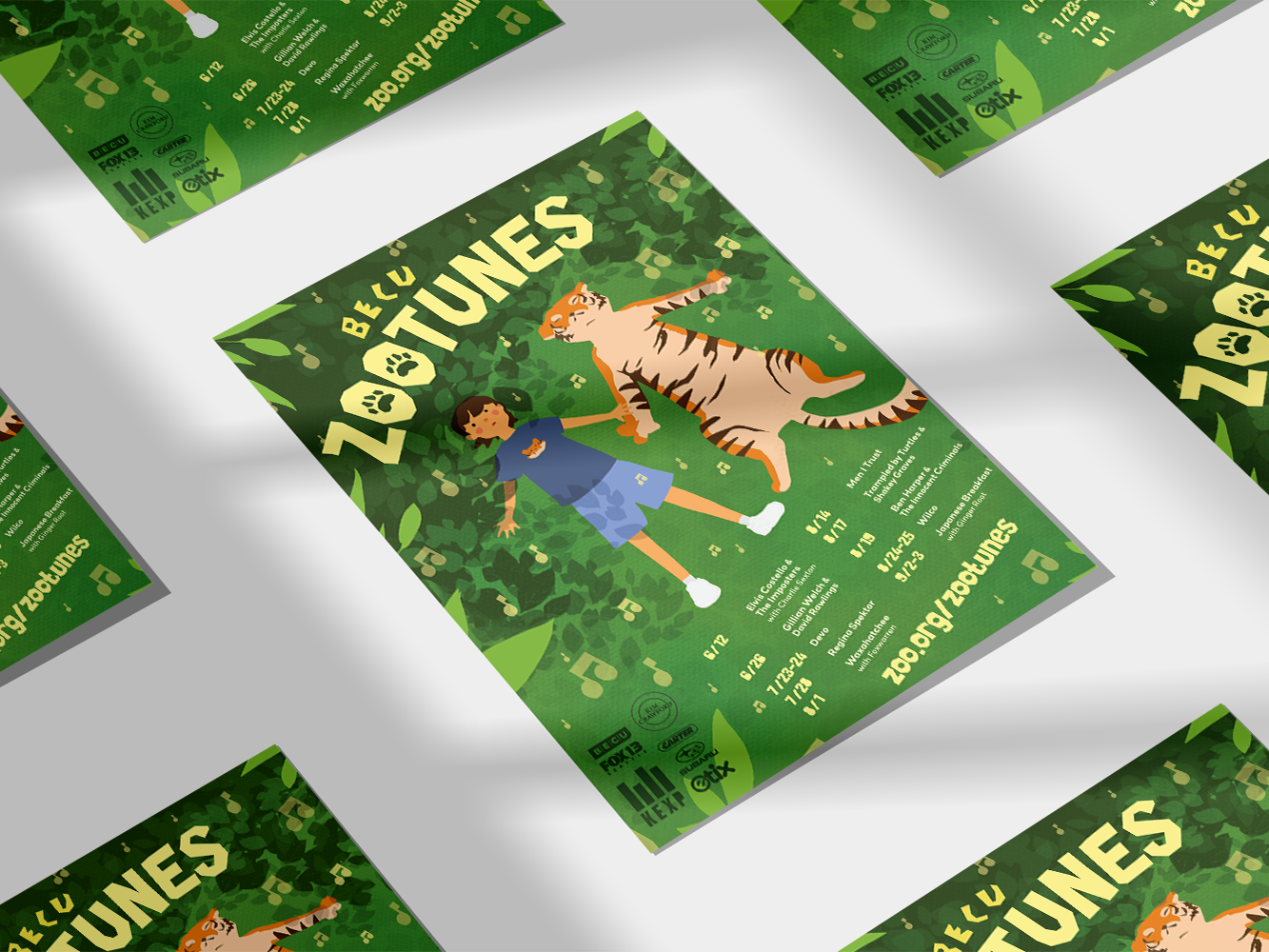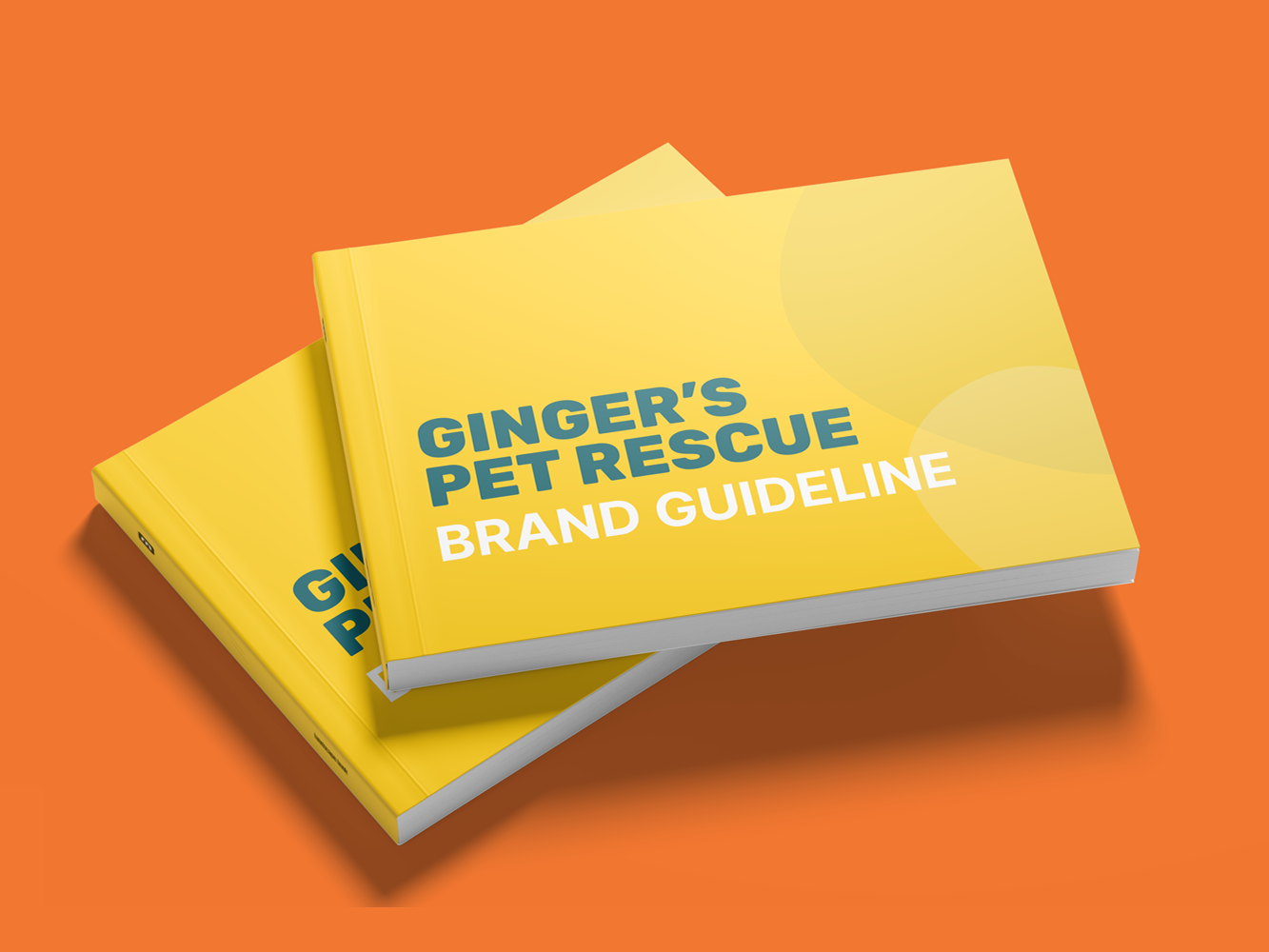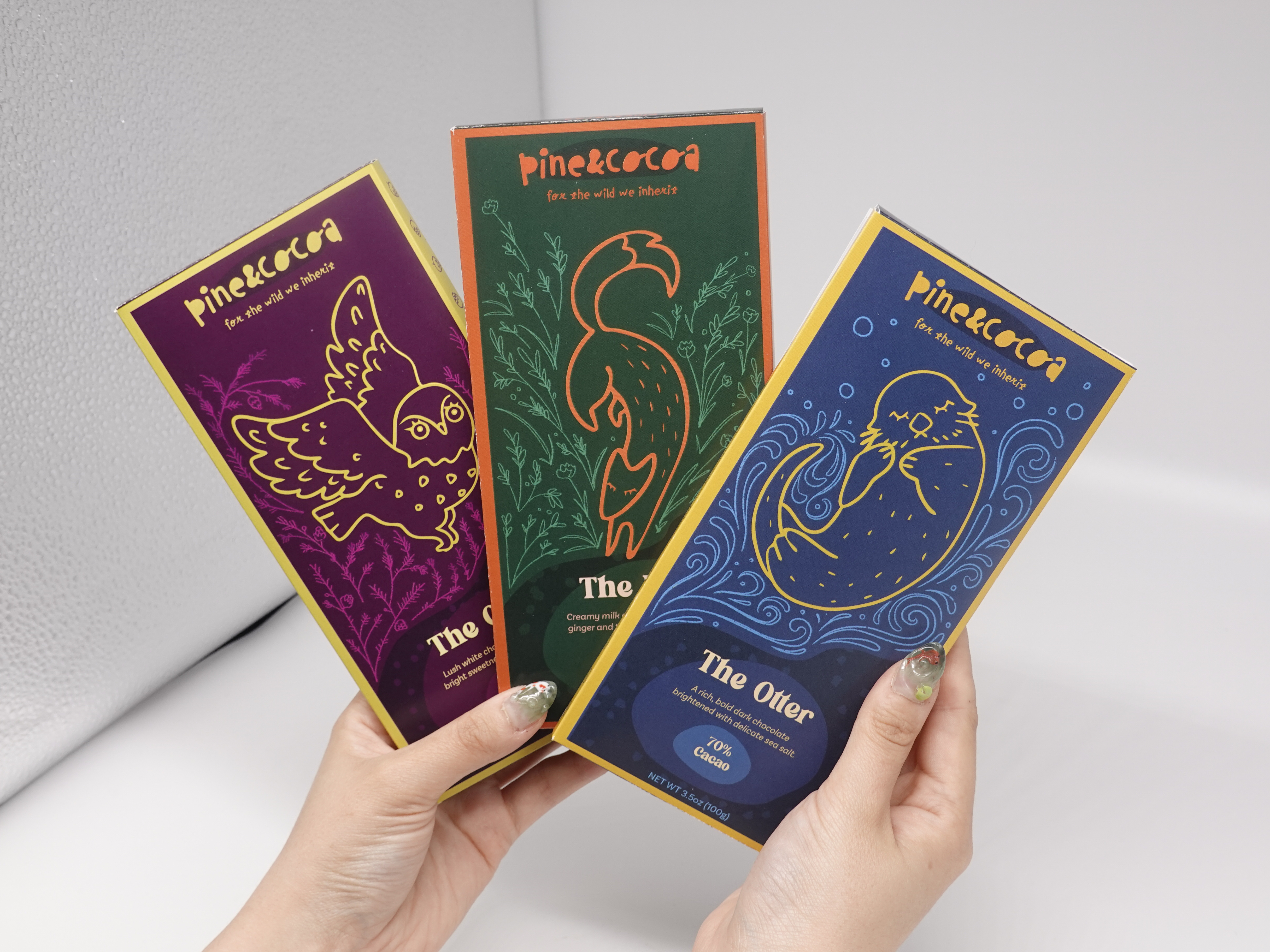Rise:BioGuardians
A STEM game adventure!
Game Design | UI/UX | AI Studies
Rise: BioGuardians is a friendly STEM adventure game designed to engage young girls through vibrant visuals, passive learning, and player-driven exploration.
Challenge
How can a welcoming environment be designed for young women that bridges the world of STEM and video games together? What type of design would encourage young women to become interested in the STEM field and Video Games?
Solution
I designed a visually vibrant, friendly, “low-risk high reward” game that implements passive STEM learning into an enjoyable game experience. Because the intent of the game is to pique interest in STEM subjects, it’s important to ensure the learning elements are not pain points in the player’s journey. For example, in the game, the player is given visual cues that help them find answers without having pre-existing knowledge about the topics.
Timeframe: 10 weeks
Plant Diagnostics Mini-Game
Correct errors in the DNA sequence to fix the mutation!
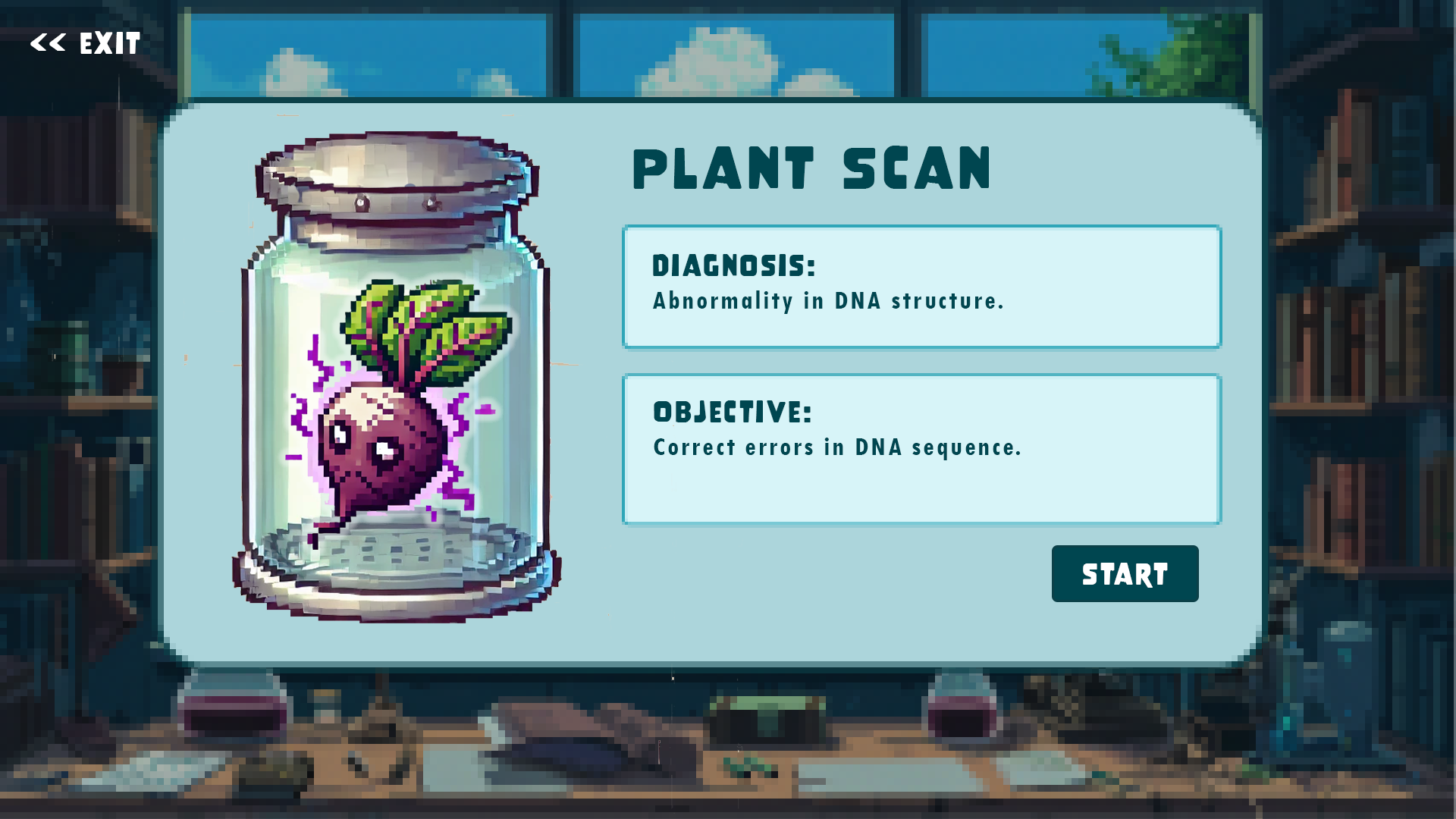
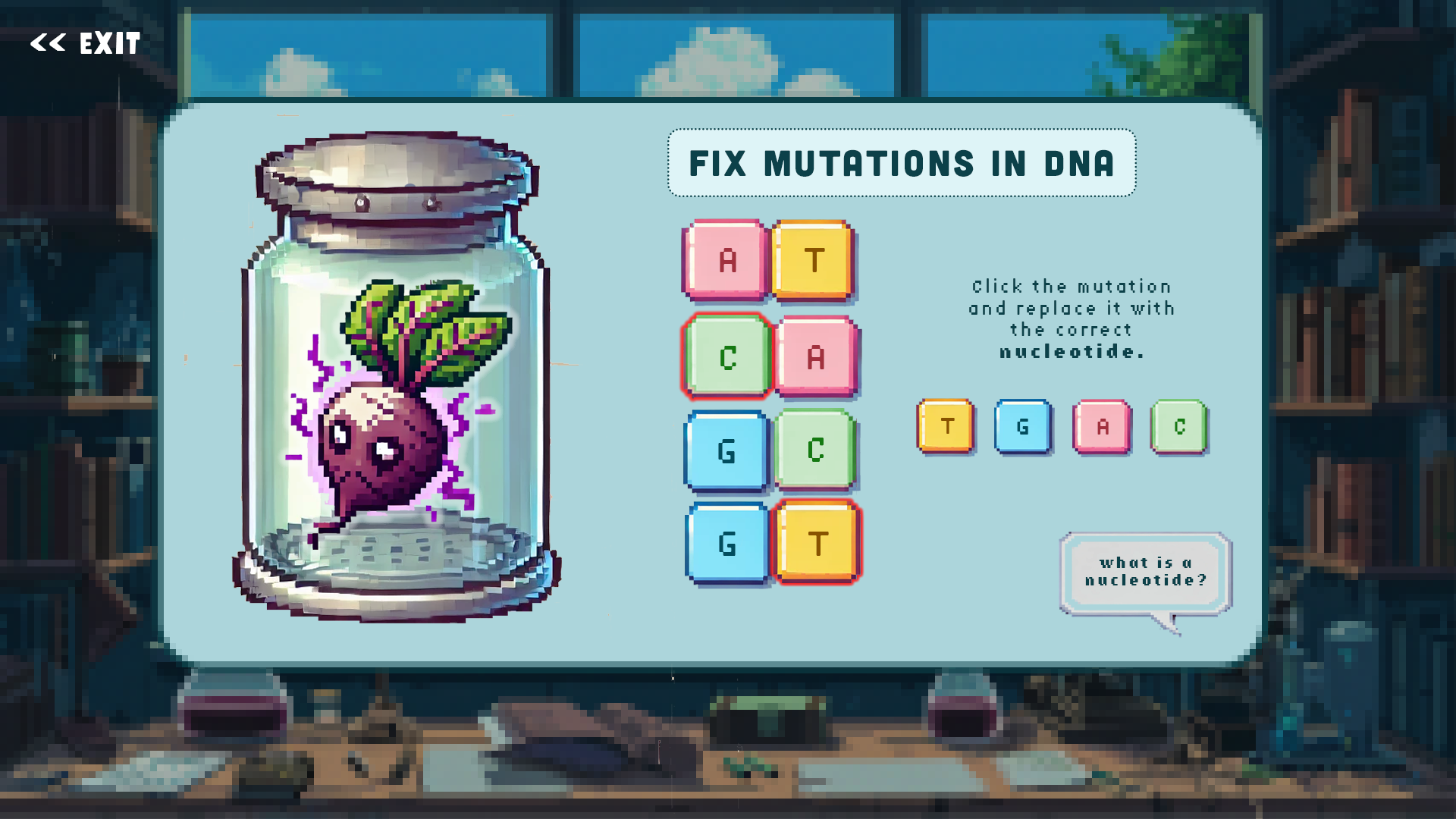

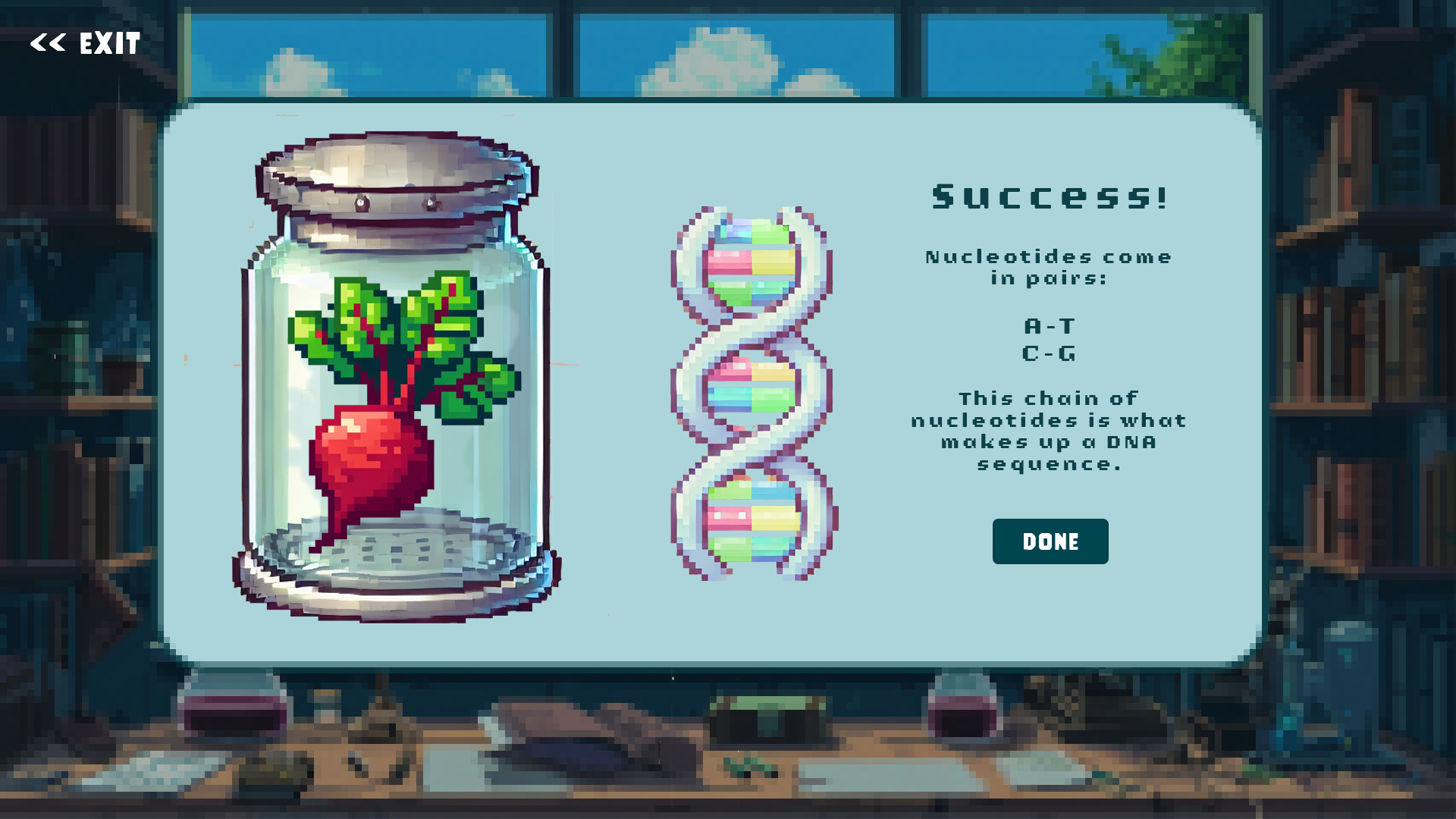
Archetype 1: The Brainiac
This player seeks out challenges and enjoys problem solving. Mini Games and Puzzles would meet this player’s needs.
The difficulty of the challenge should not discourage the player from continuing the game.
The intent of the game is to pique interest in STEM subjects, it’s important to ensure the learning elements are not pain points in the player’s journey. A challenge is a desired, yes, but if the player is at loss, it defeats the purpose of the entire element. Therefore...
There is no requirement for the player to have prior knowledge of the subjects to "pass" the challenges.
There would be visual cues (such as the red, green outlines), to indicate whether the answer is right or wrong. Ultimately, if the player simply wanted to breeze by it for the achievement the objective gives, they can. But if the player happens to want to learn, they can pay attention to the content. Either way, the player is introduced to the subject, and how invested the player will be is completely up to them.
Collection Journal
Explore, discover, and collect for rewards!
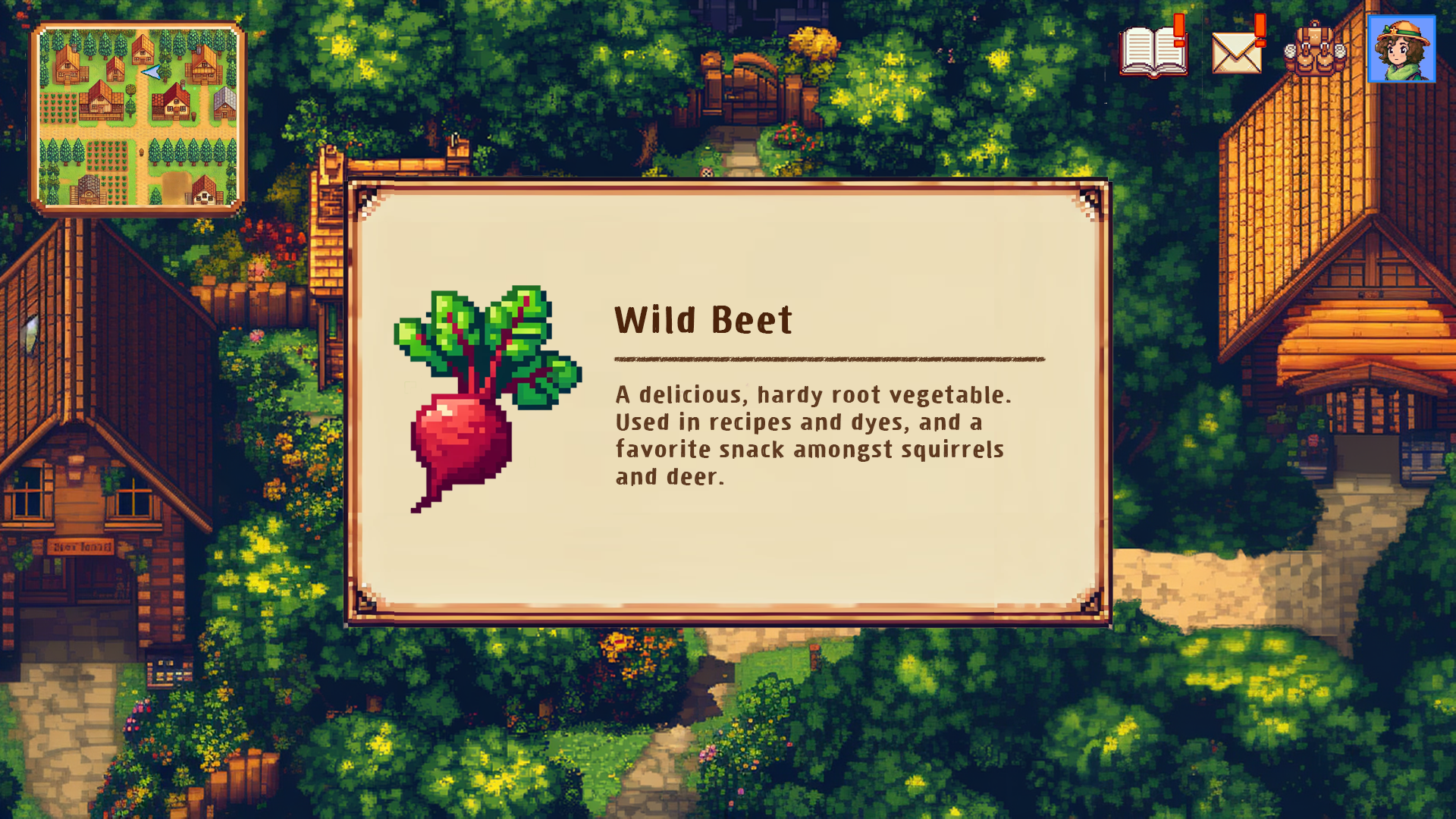
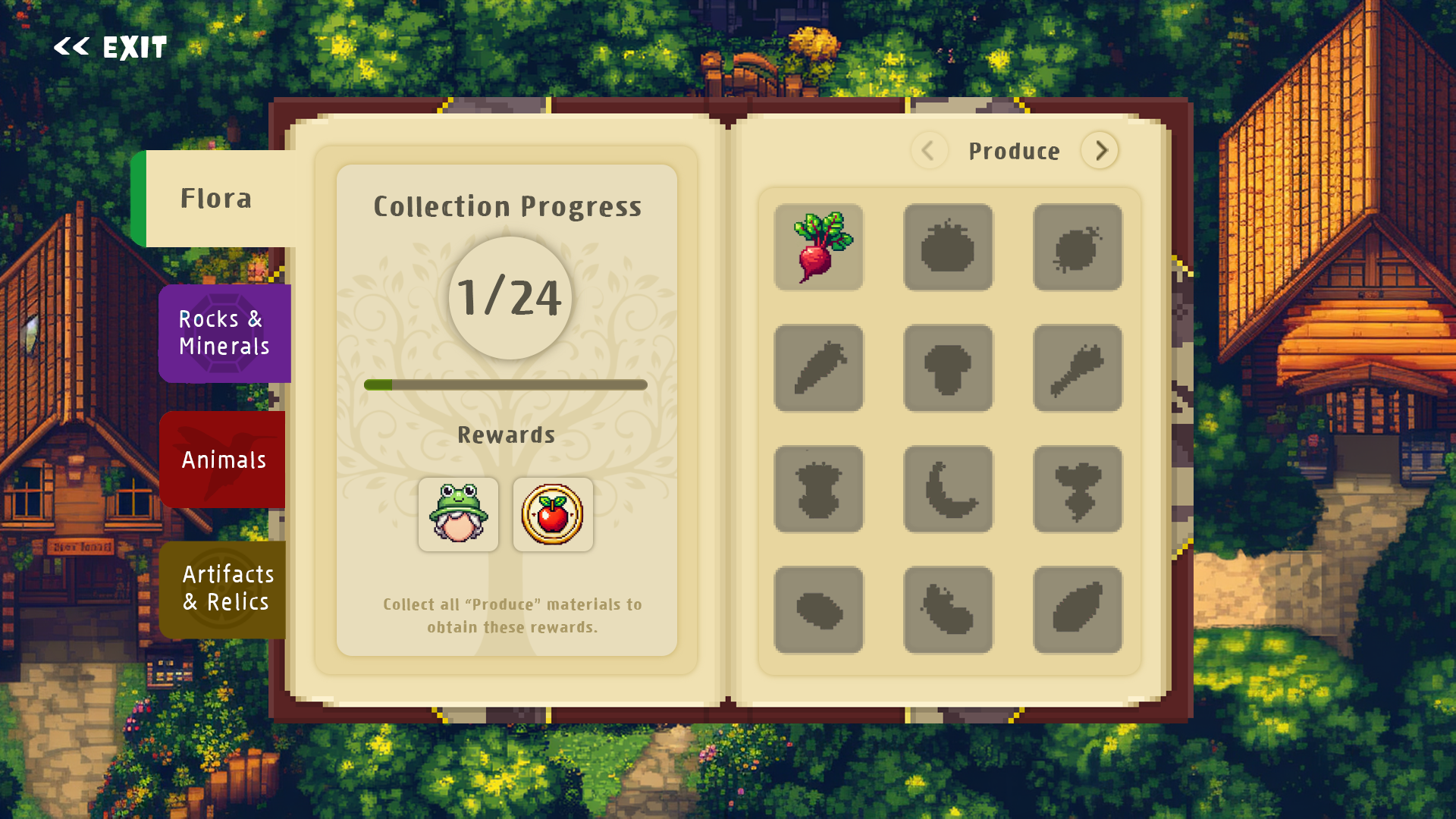
Archetype 2: The Collector
This player enjoys exploration and finds satisfaction in discovery. A collection journal or Museum would meet this player’s needs.
Collectible items are categorized, and then broken up further within those categories.
Progress towards the reward goal is displayed clearly. Satisfaction can be achieved through the progress being shown visually by the silhouettes becoming filled the more the player collects.
Story Mode
Interact with NPCs and complete quests to make progress in your story!
Archetype 3: The Hero
This player is interested in the main objective of the game- to save the world. A Story Driven Gameplay would meet this player’s needs.
An important aspect to this feature is that the player feels immersed in the game. To achieve this, the story is told through interactions with non-playable-characters (NPCs), the progression facilitated through the quests they provide.
Bonus: A Trailer for the Game
This tells the story of Rise: BioGuardians, and is also how I imagine cutscenes would look in-game.
(the button will take you to my Playground page, but you should be able to find the video easily!)
The Process
How it all came together
Phase 1: Research
Young women are often drawn to family and farming simulators, puzzle games, and interactive dramas, like Animal Crossing New Horizons, Stardew Valley, and the Sims. The visuals for these games are vibrant, and the gameplay mechanics accessible to all levels of players.
Phase 2: Mood Board!
I knew from the beginning that I wanted to go the pixel game route. I grew up playing Terraria with my father, and have enjoyed games like Stardew Valley and Katana Zero in my own time.
The goal with this mood board was to get an overall grasp of how detailed I wanted assets to be, as well as an overarching tone for color. I landed on the more detailed end of the pixel art spectrum, and lots of saturation/vibrancy.
Phase 3: Archetypes
Before I could design my task flows, I thought about who I am designing for. As you may have read above, I landed on:
The Brainiac
This player seeks out challenges and enjoys problem solving. Mini Games and Puzzles would meet this player’s needs.
This player seeks out challenges and enjoys problem solving. Mini Games and Puzzles would meet this player’s needs.
The Collector
This player enjoys exploration and finds satisfaction in discovery. A collection journal or Museum would meet this player’s needs.
This player enjoys exploration and finds satisfaction in discovery. A collection journal or Museum would meet this player’s needs.
The Hero
This player is interested in the main objective of the game- to save the world. A Story Driven Gameplay would meet this player’s needs.
This player is interested in the main objective of the game- to save the world. A Story Driven Gameplay would meet this player’s needs.
Phase 4: Brainstorming/Sketching Taskflows
After determining the archetypes, I pretty quickly came up with what flows to design for each of them.
I had bigger dreams for all of these; for example, if you click on an item in the collection book, a new page would come up where more information regarding the item would be displayed. For a plant, it would talk about its uses, what companion plants would suit it, what environments it should be grown in, etc. Alas, time is a constraint, and these ideas live on in my sketches. :)
(please feel free to click on the images for a closer look!)
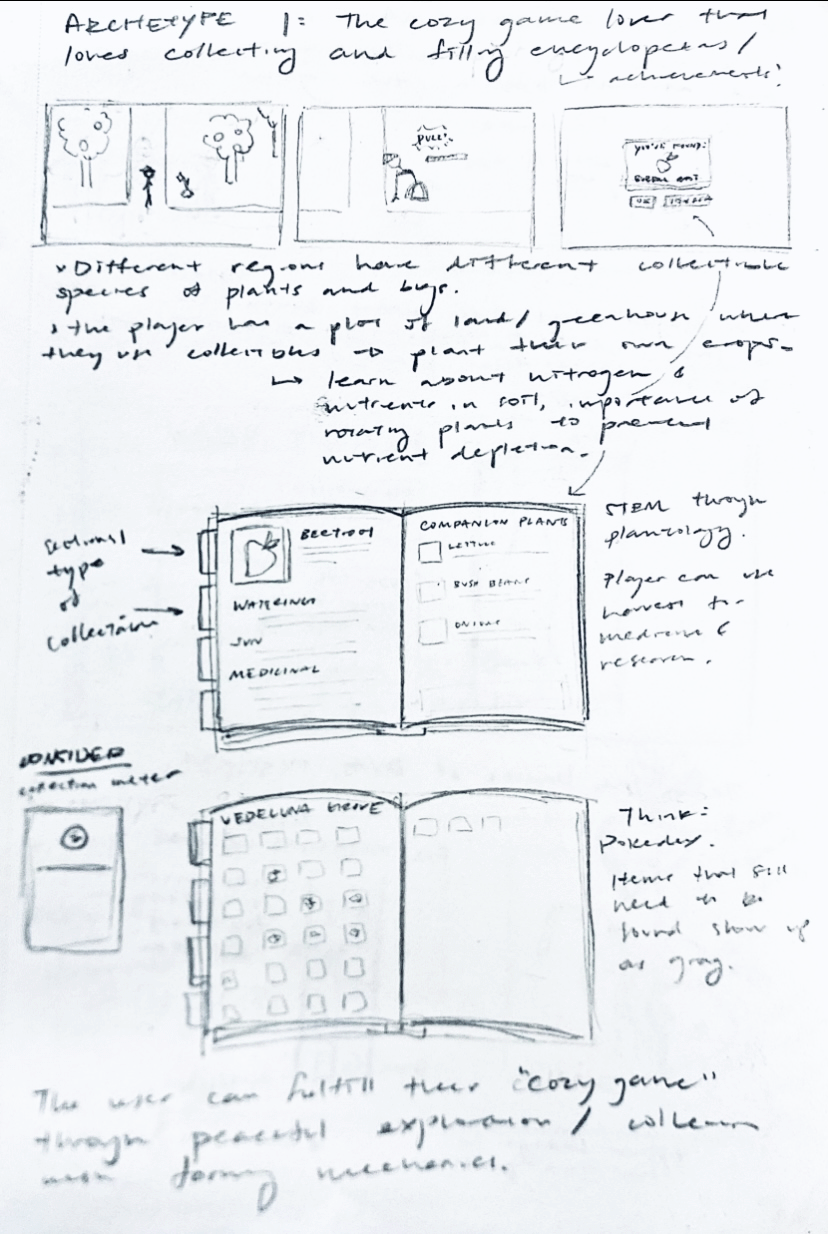
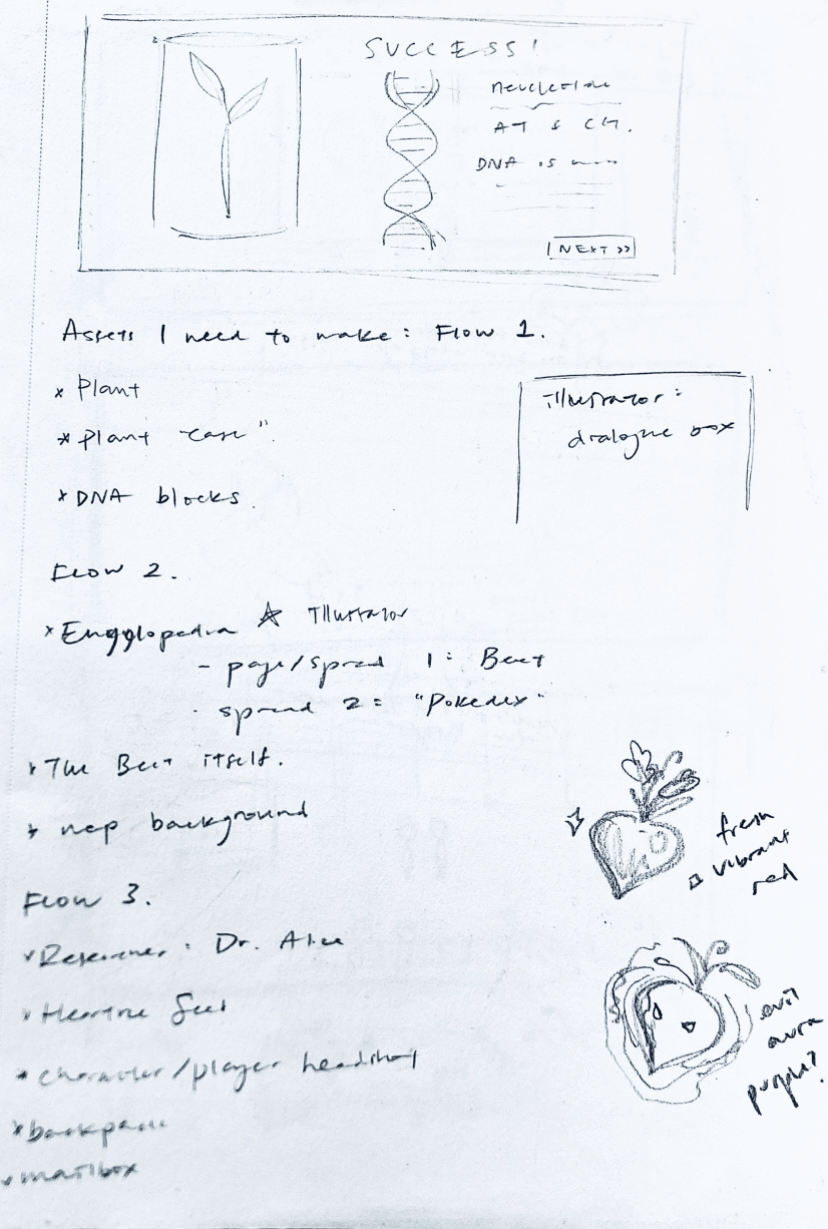
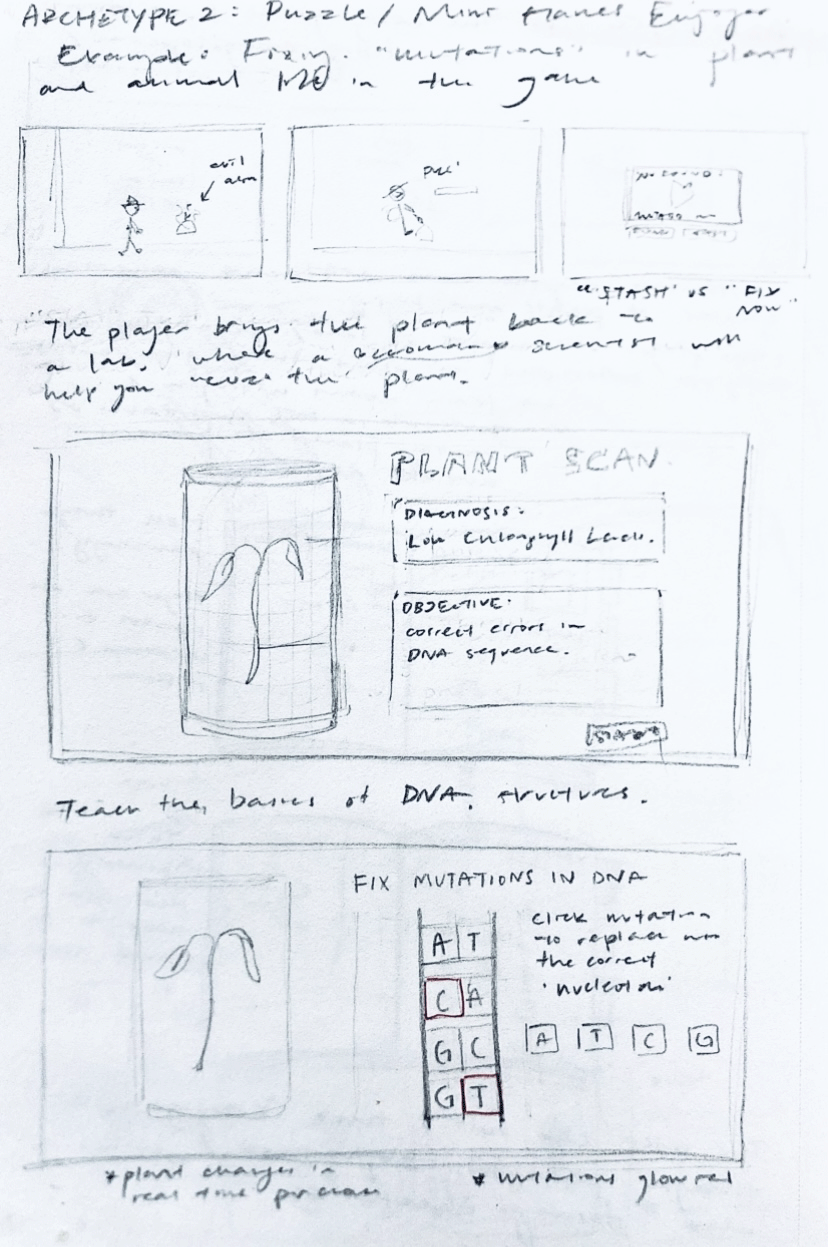


Phase 5: Sprite/Background Generation
With my taskflows determined, I listed all the backgrounds I need for each scene, as well as the assets I'd need.
Everything I generated essentially followed the same formula:
1. Generate until the desired style is achieved
2. Use that image as a stylistic reference for further generating
Once I was able to generate something that looked "right", I was then able to use it as a reference point for the AI so that the following images would look stylistically similar.
I used Midjourney and GPT 4-o.
Phase 6: Piecing Things Together!
Once I had my assets, I began putting everything together. This was arguably the most time consuming task- I ended up building some things from scratch.
Does the Collection Book look familiar to you? I referenced the Adventurer Handbook from the game Genshin Impact.
I used Adobe Illustrator and Photoshop.
My feelings on Generative AI
Short answer: it's bad! I'm not afraid to admit that.
Its impact on the environment, as well as the questionable ethics surrounding it is undeniable. The images I generated as well as the final result are an amalgamation of countless hours that real people have put into their craft. If I had the means to, I would have made everything myself.
The thing is, though, I was able to develop a proof of concept in just 10 weeks. A high-fidelity (in my books) representation of how I imagine this game to be. Would I have been able to do this without generative AI? No. Realistically, would I really have put time into learning how to make this detailed of pixel art to create this proof of concept? Probably not.
10 weeks. This wouldn't have been possible 2 years ago, and here we are.
If I didn't have an interest and love for games, I wouldn't have chosen this project at all. As an artist, it kind of leaves me with a bad taste in my mouth. At the same time, I have pride for it, because at the end of the day, the ideas are mine, the vision is mine, and I pieced everything together.
Thank you to ConcernedApe (Stardew Valley), Re-Logic (Terraria), Noio Limited/Licorice ehf (Kingdom Two Crowns); I name dropped your games to obtain my assets.

